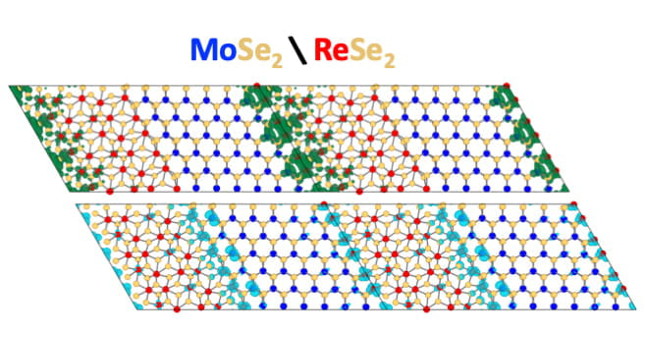Rice University researchers are developing 2-D transition metal dichalcogenides, which could be useful for optoelectronic applications and quantum computing.

Rice University’s lab of materials scientist Pulickel Ajayan has created unique two-dimensional flakes with two distinct personalities: molybdenum diselenide on one side of a sharp divide with rhenium diselenide on the other. From all appearances, the two-toned material likes it that way, growing naturally — though under tight conditions — in a chemical vapor deposition furnace.
The material is a 2-D transition metal dichalcogenide heterostructure, a crystal with more than one chemical component. That’s not unusual in itself, but the sharp zigzag boundary between elements in the material is unique.
Dichalcogenides are semiconductors that incorporate transition metals and chalcogens. They’re a promising component for optoelectronic applications like solar cells, photodetectors and sensing devices. Amey Apte, a Rice graduate student, said they may also be suitable materials for quantum computing or neuromorphic computing, which emulates the structure of the human brain.
An illustration shows several arrangements of rhenium diselenide and molybdenum diselenide, which form a razor-sharp junction where they meet in a new transition metal dichalcogenide created at Rice University. The material is scalable and its band gap tunable for optoelectronics. Courtesy: Ajayan Research Group/Rice University[/caption]
The researchers think they can gain further control of the material’s form by tailoring the substrate for epitaxial growth. Having the atoms fall into place in accordance with the surface’s own atomic arrangement would allow for far more customization.
Rice University
– Edited by Chris Vavra, production editor, Control Engineering, CFE Media, [email protected]. See more Control Engineering industrial PC stories.



